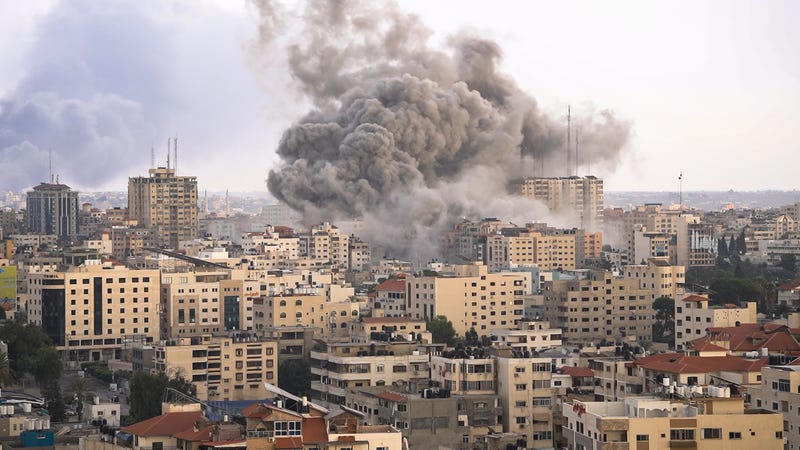When Empires Drew Borders, They Drew Modern Battlelines
The latest clash between Thailand and Cambodia underscores how unresolved colonial-era borders continue to spark modern conflicts around the world.
The renewed border conflict between Thailand and Cambodia is just the latest reminder of how the legacies of colonial mapmaking continue to sow instability. Although Thailand was never colonized, its neighbor, Cambodia, was once part of French Indochina—an arbitrary division imposed by European powers that drew lines without regard for history, geography, or the people.
At the heart of the current dispute are small parcels of land along their 800-kilometer border, areas long contested and unresolved through diplomacy. When talks fail, conflict follows. It’s a pattern repeating worldwide, with century-old border decisions still triggering violence and insecurity.
In Eastern Europe, Russia’s war in Ukraine also stems from unresolved imperial entanglements. Ukraine’s modern borders were shaped by centuries of imperial domination—first by Tsarist Russia, then by the Soviet Union. Stalin’s policy of Russification, including the relocation of ethnic Russians to regions like Donbas and Crimea, laid the foundation for Vladimir Putin’s narrative of “reclaiming” territory. Khrushchev’s 1954 transfer of Crimea to Ukraine—intended as an administrative gesture—became one of Putin’s central justifications for invasion.

In South Asia, the decades-long Kashmir dispute between India and Pakistan is a direct consequence of the 1947 partition of British India. Despite a Muslim majority, Kashmir’s Hindu ruler chose to accede to India, sparking the first Indo-Pakistani war—the result: a divided territory, a persistent flashpoint, and generations of conflict. Recent clashes in May 2025—sparked by a terrorist attack—saw both sides launch strikes across the Line of Control, further inflaming tensions. Civilians paid the price, as always, living under curfews, surveillance, and fear. The region’s stagnation isn’t due to natural geography or ideology, but to British withdrawal without a viable plan.
Africa’s post-colonial landscape is another casualty of imperial expediency. European powers—British, French, Dutch, Portuguese, Belgian—drew lines that divided tribes, merged rivals, and ignored centuries of coexistence. A dispute over a colonial-era map sparked the Ethiopia-Eritrea war (1998–2000). Though a border commission ruled in Eritrea’s favor, the issue remains volatile.
The Democratic Republic of Congo, an invention of Belgian rule, continues to endure internal wars complicated by porous, ill-defined borders. Armed groups routinely cross into Rwanda and Uganda, blurring national sovereignty and fueling instability. The Bakassi Peninsula dispute between Nigeria and Cameroon—over oil-rich land—took decades to resolve, and only after an international court ruling. In South Sudan, the contested Abyei region remains another flashpoint—an inheritance from colonial administrative maps that failed to account for tribal realities or the potential for future autonomy.
In South America, the remnants of Spanish colonial rule created lasting tensions. Chile and Argentina nearly went to war in 1978 over the Beagle Channel, a dispute rooted in ambiguities from an 1881 treaty. Papal mediation eventually averted full-scale war, but unresolved areas in Patagonia remain. Similarly, Peru and Ecuador fought several wars—most notably in 1941, 1981, and 1995—over jungle territory defined by vague royal decrees from colonial times. Not until 1998 did the nations finally settle their boundary through the Brasilia Presidential Act.
Even in North America, where war is unlikely, colonial and post-colonial border anomalies persist. Point Roberts, Washington, is a geographical oddity created by extending the U.S.-Canada border along the 49th parallel, leaving a U.S. exclave accessible only through Canada. The Northwest Angle in Minnesota, a result of misreading the source of the Mississippi River, is another cartographic relic. These quirks are benign but still create logistical headaches.
On the U.S.-Mexico border, natural shifts in the Rio Grande have led to territorial disputes, such as the Chamizal conflict. Changes in the river’s course left Mexican land on the U.S. side and vice versa, resulting in a treaty to restore the original boundary. Even today, small tracts called "bancos" appear and disappear with the river’s movement, requiring ongoing diplomatic management.
The Middle East, perhaps more than any other region, suffers from the most catastrophic colonial aftershocks. After World War I, the British and French carved up the Ottoman Empire under the Sykes-Picot Agreement and the Balfour Declaration, creating nations like Iraq, Syria, Jordan, and Israel with no regard for local consent. These borders forced together rival ethnic and religious groups, setting the stage for authoritarianism, rebellion, and external manipulation.
Iraq, for example, was cobbled together from Sunni, Shia, and Kurdish populations. Syria was similarly pieced together without consideration for Alawites, Druze, Christians, and Sunnis. These artificial constructs collapsed under the weight of civil wars and power vacuums. But no border decision was more fateful than the 1948 creation of Israel.
The UN Partition Plan split the British Mandate of Palestine into Arab and Jewish states, but the local Arab population rejected the plan as another colonial slight. The result was the first Arab-Israeli war and the displacement of hundreds of thousands of Palestinians. What followed was a sequence of wars, occupations, and uprisings. The Six-Day War, the Yom Kippur War, the Lebanese conflicts, and today’s Gaza confrontations are all rooted in the post-colonial effort to define national boundaries and identity without the input of those most affected.

Today, the pain of those arbitrary lines is not abstract. It’s mortar shells in Kashmir, drone strikes in Ukraine, refugees in Gaza, and border skirmishes in Africa. Each conflict has its context, but they all share the same origin: a past in which colonial powers acted with impunity, redrawn maps with a pen, and left the consequences for others to endure.
So when people ask why the world seems to be constantly at war, they need look no further than the cartographers of empire. Those lines in the sand may have faded from the maps, but they remain etched in blood.



